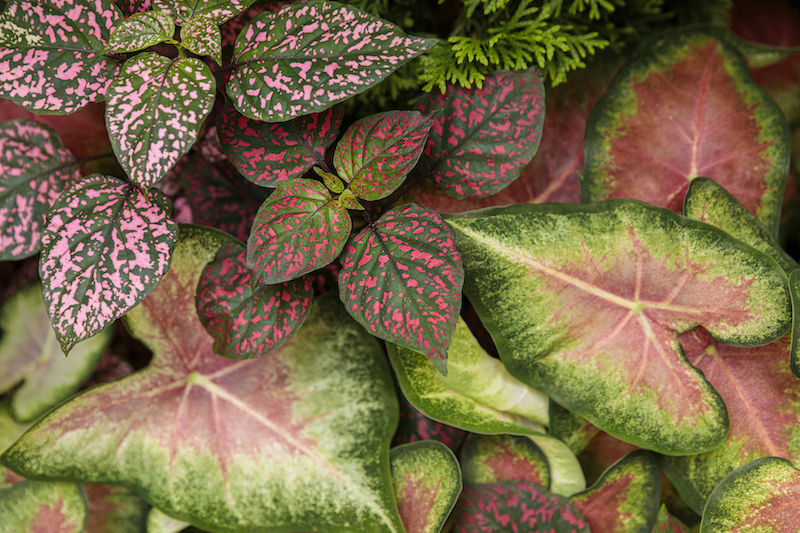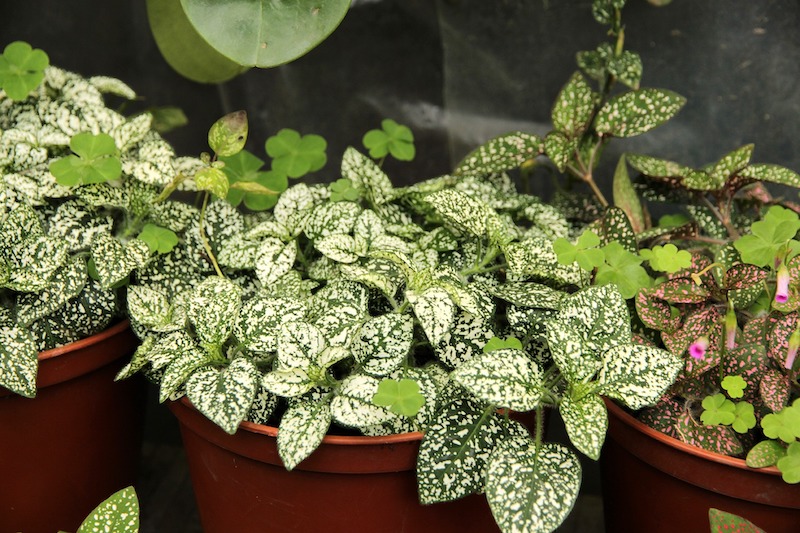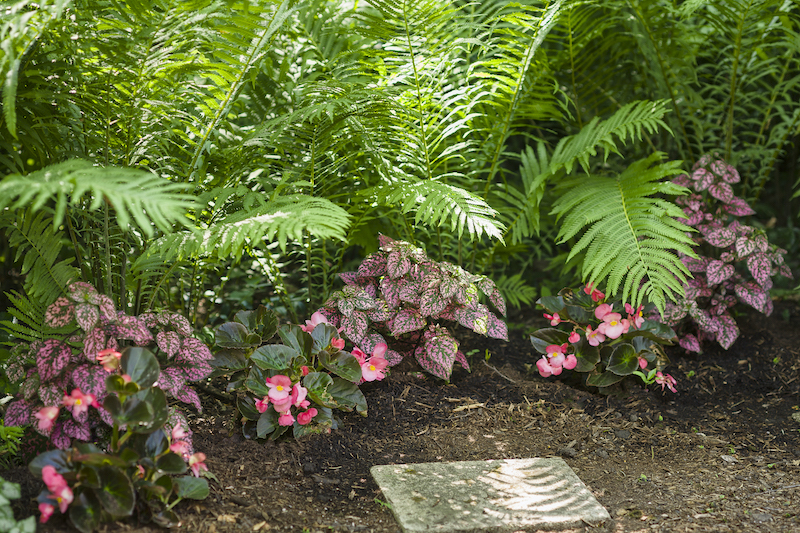Growing Polka Dot Plants
Polka Dot Plants are tropical, flowering plants known for their foliage. These leafy plants have mottled leaves that may feature shades of green contrasted with pink, purple, red, or white, depending on the variety. This medium-sized plant is native to Southeast Asia, Madagascar, and South Africa and also goes by the names flamingo plant, freckle face, measles plant, and pink dot.
Polka Dot Plants have a bushy, branched structure and are covered with soft and showy leaves. Flower spikes emerge in late summer or early fall. The flowers are lovely but not very showy, as the foliage is the showstopper. It may take an expert hand to get the conditions just right, but Polka Dot Plants are easy to look after once their needs are met and settled.

Polka Dot Plants Sunlight Requirements
Place Polka Dot Plants in a south- or east-facing window because these plants like bright indirect sunlight. Direct sunlight can singe the leaves and cause the normally saturated colors to appear muted. Too little light may cause the variegation to revert, and the stems can become unwieldy or leggy. Rotate the plant every few weeks, so the plant receives even light on all sides. Some plant owners give the container a quarter turn each time they water it, so the leaves are consistently bathed in sunlight.
Planting Polka Dot Plants
The two main soil requirements for Polka Dot Plants are drainage and high organic content. Polka Dot Plants do not like wet feet and can succumb to root rot when the soil does not drain. Rich, fertile soil promotes growth and enables the plant to continue to push out lovely, mottled foliage. Growth will slow to a stop when the plant has outgrown its container. The easiest way to know when a Polka Dot Plant has become root bound is to check the pot. If the roots are poking through the drainage holes, it is time for a new pot. Select a new container that is 1 - 2 inches larger and fill it with fresh soil. The best time to repot this plant is in the spring, when the plant is actively growing.

Watering Polka Dot Plants
Polka Dot Plants are finicky about moisture, and if there is going to be an issue with care, it usually revolves around moisture. These plants like to be consistently damp – never dry and never soggy. Feel the soil, and water when the top inch of the soil is dry. Drench the soil until excess water drips through the container. Dormant plants will need water less often than plants that are actively growing. Increased humidity is ideal for Polka Dot Plants. These plants can live in average humidity, but if you notice the edges of the leaves turning brown, then use a pebble tray or humidifier to help hydrate the plant, or mist it with a water bottle.
Fertilizing Polka Dot Plants
Rich soil and fertilizer applications will keep Polka Dot Plants leafy and growing. Polka Dot Plants are heavy feeders, and a proper diet will help them thrive. Feed Polka Dot Plants using a balanced fertilizer formulated for leafy houseplants. Use a water-soluble plant food that can be given when the plant needs water. Fertilize plants when they are actively growing. Avoid feeding plants that are dormant.
Common Polka Dot Plant Problems
When the plant receives improper lighting, the leaves may curl or lose their vibrant color. If you notice these issues with the foliage, relocate the plant to an area with more appropriate lighting. A lack of water and humidity may cause the leaves to droop, turn brown, and fall off. Remove dead or damaged growth and adjust the moisture and humidity levels to address these problems. Polka Dot Plants bloom at the end of the growing season as the days get shorter. You can encourage your plant to bloom by controlling how much light it receives. Some plant owners choose to remove the flower stalks because the plant will go dormant after the bloom cycle is complete. By preventing the Polka Dot Plant from blooming, it may continue to grow year-round.
Propagating Polka Dot Plants
Expand your Polka Dot Plant collection by growing new plants from stem cuttings. Take cuttings at any time of the year, although cuttings taken in the spring and summer are more likely to root quickly and will minimize disruption to the parent plant. Sterilize shears and cut a stem section that measures 2 - 4 inches long. Cuttings can be propagated in water or soil.

Growing Polka Dot Plants Outdoors
Polka Dot Plants are sometimes grown as annuals in areas with cold winter weather. Potted plants are easy to grow outdoors in the warmer months and then can be discarded at the end of the season. Polka Dot Plants living outside need some shade because intense sunlight will damage the delicate foliage. Naturally humid climates are well suited for Polka Dot Plants because these leafy plants like moisture in the air. Potted plants need a container with drainage, so rain will not overwhelm the root system. The plant can only be outdoors when there is no threat of frost, and temperatures above 60 degrees F are ideal for Polka Dot Plants.
 |
Author Alison Cotsonas - Published 03-07-2023 |
